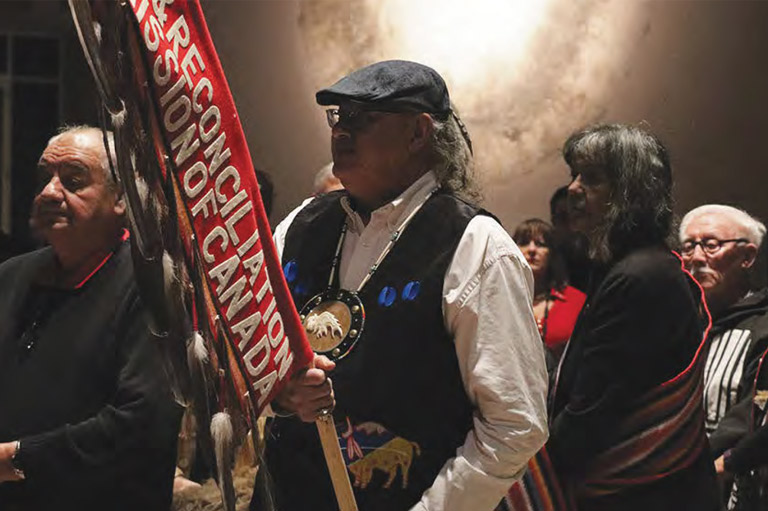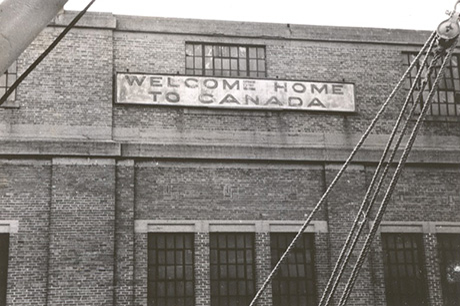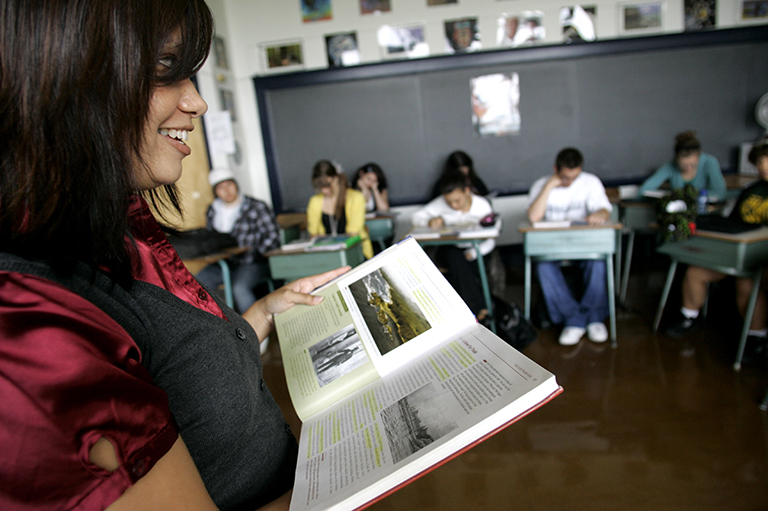Discover a wealth of interesting, entertaining and informative stories in each issue, delivered to you six times per year.
Patriotic Arts: Influencing Canadians at War
Grade Levels: Grades 3 and up
Subject Area: Social Studies, History, Geography, ELA, Civics, Creative Writing, Language Arts, Drama
Time Required
Elementary: 5 to 7 weeks. This time frame allows the teacher to integrate the theme into the language arts, visual arts, music and choir and social studies. It also allows time to plan for guest speakers such as veterans, peacekeepers and grandparents, as well as taking a field trip to the local armory, cenotaph or museum.
Note: It would be best to begin work on this subject as early in September as possible to culminate in a presentation for Remembrance Day in November. At the elementary level, this subject requires a period of five to seven weeks.
Historical Thinking Concept(s)
This lesson plan uses all six historical thinking concepts. This includes: establish historical significance, use primary source evidence, identify continuity and change, analyze cause and consequence, take historical perspectives, and understand the ethical dimension of historical interpretations.
Learning Outcomes
Students will:
- Study novels; conduct research; write reports, stories and family biographies; read poetry written during this period and write poems; write letters to Canadian soldiers serving all over the world.
- Study drawings and paintings of Canadian war artists, such as Alex Colville; war posters and propaganda; and create original art or posters.
- Learn the songs that inspired confidence and patriotism in soldiers and citizens such as White Cliffs of Dover, When They Sound the Last All Clear, etc.
- Understand timelines of Canada’s involvement in wars; the history behind the songs of this era; the events that led to the First World War and the Second World War; more current events involving Canadian soldiers.
Background Information
This subject has great potential for applying performing and visual arts, and creative writing. The simplest way of doing this is teaching the students the songs that were made popular during World War I or II and the history behind these songs. Also, a dramatic presentation does well for this subject, along with poetry and stories.
This theme should begin in September with a general discussion around what the students already know about the subject and what they would like to learn. Some students will be keen to begin doing individual research projects on such subjects as Adolph Hitler, important battles such as Dieppe, conscription, war medals, Canadian veterans such as John McCrae and Billy Bishop, and those who won medals such as the Victoria Cross. This is also a good time to begin a novel study or read a historical fiction novel to the class during story time. This work can integrate spelling and writing exercises.
If the teacher intends to have a Remembrance Day performance, either dramatic, musical or both, then this project should begin by the end of September. Song sheets can be introduced, along with a discussion about their meanings, history and content.
For example: Pack Up Your Troubles was first made popular during WWI, but was also a favourite marching song during the Second World War. This song has the potential for an interesting discussion of the benefit of singing on people’s emotions; the implications of the government supplying soldiers with as many free cigarettes as they wanted and thereby addicting thousands of people to smoking; the change over time of our language—a fag once meant a cigarette and a Lucifer was a match and so on. Another great song worth discussing is We’re Gonna Hang Out the Washing on the Siegfried Line. The Siegfried Line was a defense line surrounding Germany.
The teacher should also plan early for guest speakers from the Legions, Veterans Affairs or the Peace Corp. Many regiments will be planning Veteran’s Day events as well. By mid-October the students will be informed enough that they may want to write their feelings down in poems or stories. They may also wish to express themselves in pictures, posters etc. These works should be displayed around the classroom, building on the overall importance of this theme and in anticipation of Remembrance Day. Timelines and maps done by the students should also be displayed.
The Lesson Activity
Activating:
Given this is an entire unit developed for war and memory at any learning level, students should complete background reading and participate in lessons appropriate to related themes. This may include viewing documentaries related to Canada’s war experiences.
Acquiring:
These activities allow for collaborative / co-operative and individual learning opportunities. The students are exposed to a wide variety of forms that have been used to portray Canada’s experiences with war such as novels, poems, war art and documentaries. They also have the opportunity to listen to guest speakers who can share their first hand experiences with war and conflict.
Applying:
Students will demonstrate their learning through group discussion / interaction, culminating activities including reflection writing and cenotaph and soldier research. Perhaps they could also present their finished work to the class.
Materials/Resources
Websites:
- Veterans Affairs Canada - First World War
- Veterans Affairs Canada - Second World War
- Lest We Forget: Cenotaph Research
- Canadian War Museum’s Art and Culture
- Veteran’s Affairs Canada War Art & War Posters
- Canadian War Museum’s In Flanders Fields and John McCrae
- Virtual Gramophone: Canadian Historical Sound Recordings
Fiction: (check for age appropriateness)
- Ellen’s Secret by Jean Booker
- Wish Me Luck by James Heneghan
- The War Visitors Trilogy by Kit Pearson (Canadian)
- War of the Eagles by Eric Walters (Canadian)
- We Were Heroes: The Journal of Scott Pendleton by Walter Dean Myers
- A Brave Soldier by Nicolas Debon (Canadian)
- I am David by Anne Holm
Non-fiction:
- High Flight: A story of World War II by Linda Granfield
- In Flanders Field The Story of the Poem by John McCrae by Linda Granfield
- When Your Numbers Up by Desmond Morton (Not appropriate at elementary level, but good teacher resource)
Themes associated with this article
- Environment & Geography
- French Canada
- Peace & Conflict
- Settlement & Immigration
- Women
- Arts, Sports & Culture
- Discover Your Community
- First Nations, Inuit & Metis
- Industry, Invention & Technology
- Media & Communications
- War and the Canadian Experience
- Social Justice
- Exploration & Geography
- Canadian Identity
- Religion & Spirituality
- Canada and the Global Community





